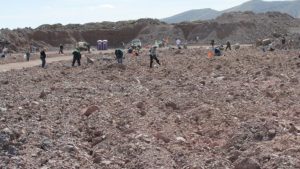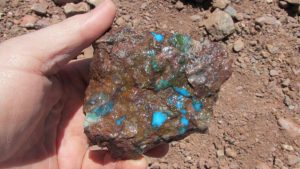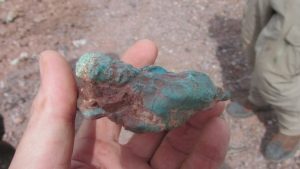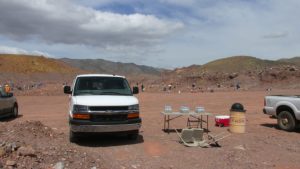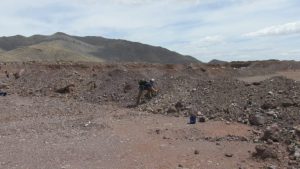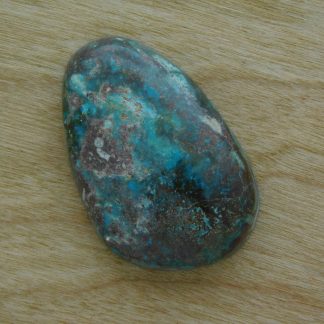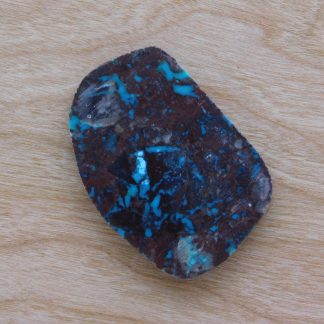First of all, the Bisbee Tailing Field is at the old number 7 dump outside of Bisbee, Arizona. Consequently, when the Lavender Pit mine is in full operation, different mineral discoveries move to pre-determine areas of this massive property.
In general, turquoise from the old Number 7 dump is scarce. Most noteworthy, in the 1970’s, Mr. Mathews is the only person that the mine grants mineral rights. Consequently, this grant is to recover this precious turquoise. Indecently, Mr. Mathew recovers approximately 2,000 pounds of different grades of the Bisbee turquoise. However, Mr. Mathews does not recover all the turquoise material!
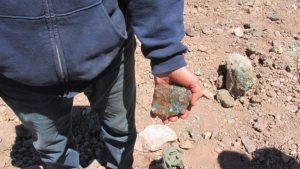
Then again, a small group of Bisbee turquoise enthusiasts are lucky enough to visit the number 7 tailing field. In addition, below are pictures of our friends who discover prize rough pieces of this precious turquoise. Conversely, some of our friends are hesitant to reveal their identities, while others don’t care!
In addition, this is a picture of Chris, who is another friend. Above all, Chris finds a beautiful Bisbee turquoise specimen. Nonetheless, this piece is a light blue variety, but is mostly a solid nugget of blue!
These are additional pictures from our visit to the tailing fields in Bisbee. First of all, Freeport McMoran transports us in their vans across the vast mining property to reach the tailing field. In addition, the Freeport McMoran employees provide potable water to fill our spray bottles. As a result, we use this water to spray on the lavender host rock in hopes to reveal blue.

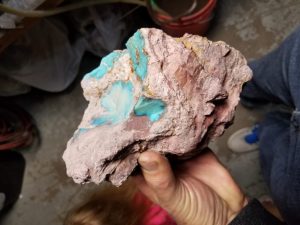
Additionally, If you would like to contact us….click ⇒ HERE
Real Turquoise 1990 – 2025 © Schannep Ventures L.L.C. ALL RIGHTS RESERVED
